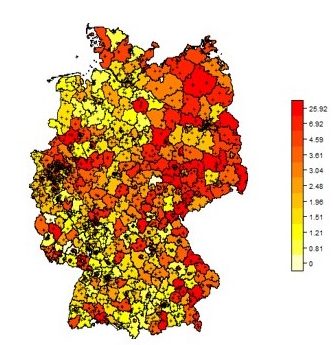
ANALYSTICS & STATISTICS
The increasing focus of health policy on evidence-based analysis shows the importance of developing a well-founded analysis plan. We jointly develop statistical questions tailored to your data. We show coherences in your database and help you evaluate them with modern statistical methods. Take advantage of our expertise, for example with questions regarding the:
Take advantage of our expertise, for example with questions regarding the:
- statistical model development
- statistical validation of influencing factors
- creation of prognoses and scorings
- development of new analytical tools
- creation of database queries with R / SQL
- creation of prediction and forecasting models
Based on our many years of experience in the AMNOG process, we develop statistical solutions for you within the framework of the IQWiG method requirements:
- preparation of meta-analyses of clinical trials
- carrying out of indirect comparisons
- assessment of subgroup effects
- performing network meta analyses
EXAMPLE: PROGRAM VALUATION
Based on secondary (claims) data, we analyze for instance epidemiological information such as prevalence and incidence, program and/or treatment effects, and patterns of care/treatment pathways. As part of the evaluation of new care programs, there is a challenge in the lack of randomization of the voluntarily participating insurees. In order to generate the best possible evidence and to minimize possible bias we use, amongst others, the following procedures:
- Identification of treatment effects, e.g. based on the matching procedure
- Procedures of longitudinal or panel statistics
- Methods of multivariate and spatial statistics
EXAMPLE: HOSPITAL QUALITY REPORTS
According to § 136b (1) No. 3 SGB V, hospitals are required to regularly publish structural information and selected treatment (quality) data. We undertake the individual preparation and analysis of the data available in XML format. This allows you to answer your questions about the hospital market in a targeted manner:
- Descriptive processing of data (for example, departments, beds, distances, treatment offers)
- Prevalence according to OPS and ICD
- Personnel figures
- Technical equipment
- Development of indicators over time
- Individual map displays
In addition, we use geostatistical methods to analyze the space-time information of the data:
- Identification of geographical factors (for example the location of the sites)
- Inclusion of external regional data (e.g. economic data and health information at district level)
This enables us to also consider spillover effects, i.e. the interactions between neighboring clinics, for the analysis of influencing factors on the hospital market.
